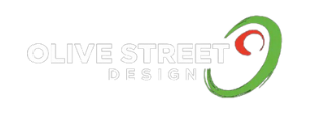How to Build a Scalable DAM System for Personalized Content Delivery

Managing digital assets across various platforms can quickly become overwhelming without the right system in place. Digital Asset Management (DAM) offers a solution by streamlining how businesses organize, store, and distribute their content. As brands aim to deliver personalized experiences, an effective DAM process ensures consistency, efficiency, and seamless integration across all digital touchpoints. With the right strategy, companies can enhance both user engagement and internal workflows, making DAM a vital component of any modern content operation.
Elevate Your CMS with an Experience Manager Site
An Experience Manager Site provides a powerful system that enables businesses to craft and manage tailored digital experiences across multiple channels. It offers the ability to handle complex content needs, making it easier to customize and deliver unique interactions to different audiences. A content management system with this capability allows for easy scalability and adaptability, empowering businesses to build responsive websites and apps that effectively engage users. By integrating seamlessly with other platforms, it supports streamlined workflows and ensures brand consistency across all touchpoints, making it an ideal solution to help your business enterprise portal CMS achieve its goals efficiently.
Bring Digital Assets Together in One Place
Centralizing your digital assets is the foundation for any effective DAM strategy. Without a unified repository, assets can become scattered across various systems, resulting in inefficiencies and wasted time. By consolidating all digital files into a single system, businesses can streamline content retrieval and prevent duplication, ensuring that teams use the most current versions of all assets. This centralization fosters better collaboration and maintains brand consistency across platforms.
Enhance Searchability with a Strong Metadata Plan
A well-thought-out metadata strategy is essential to improve the organization and searchability of assets. Metadata provides crucial information about each asset, such as keywords, dates, and file types, which makes it easier to locate and categorize content. Implementing a strong metadata plan not only enhances efficiency but also ensures that assets are readily available for personalization and relevant to specific audiences. By tagging assets with meaningful metadata, businesses can improve search accuracy and keep content relevant across campaigns.
Tools for Personalizing Content
In the personalized content era, dynamic customization is crucial. Integrating personalization workflows into your DAM system allows businesses to customize content for different audience segments efficiently. By leveraging this capability, companies can deliver tailored messages that speak directly to the user’s interests, preferences, or behavior. This kind of content customization can significantly boost engagement and conversion rates by providing a more individualized user experience.
Maintain Consistency with Version Control
Keeping track of various versions of an asset can be challenging, especially in a collaborative environment. Version control tools are critical to manage updates and changes to assets, ensuring teams work with the latest, approved versions. This feature provides a clear history of edits, minimizing the chances of outdated or incorrect versions being used. Proper version control helps businesses maintain consistency and ensures content remains aligned with brand guidelines.
Boost Efficiency with Automated Processes
Automation is a key advantage of modern DAM systems. By automating repetitive tasks—such as content distribution, tagging, and updates—businesses can free up time for creative and strategic work. Automation ensures a consistent workflow, reducing human error and boosting operational efficiency. This is particularly important when managing large volumes of content across multiple channels, where timely updates are crucial.
Establish a Clear Content Review Process
A clear and streamlined content approval process is essential for maintaining high standards and ensuring compliance with brand guidelines. DAM systems can help businesses set up an organized workflow for reviewing and approving assets before they are published. This prevents bottlenecks and reduces the time it takes to get content to market, which is especially valuable when managing time-sensitive campaigns or large content volumes.
Protect Assets with User Permissions
Security is another critical consideration in DAM. Implementing user permissions helps businesses control who has access to which assets. By establishing role-based permissions, organizations can ensure that only authorized team members can modify or access specific content. This reduces the risk of accidental or unauthorized changes while maintaining tighter control over sensitive digital assets.
As the demand for personalized content grows, an effective Digital Asset Management (DAM) process becomes a critical component of business success. It ensures that digital assets are organized, accessible, and ready for use in delivering tailored experiences that resonate with diverse audiences. By adopting a forward-thinking DAM strategy, businesses can streamline operations, enhance user engagement, and maintain consistency across all digital platforms. In a landscape where efficiency and personalization are paramount, a robust DAM system provides the foundation needed to stay competitive and deliver meaningful, relevant content at scale.
Discover the award-winning expertise of Olive Street Design, a nationally recognized leader in custom responsive and mobile web solutions since 2005. Contact us today for a free quote.



















